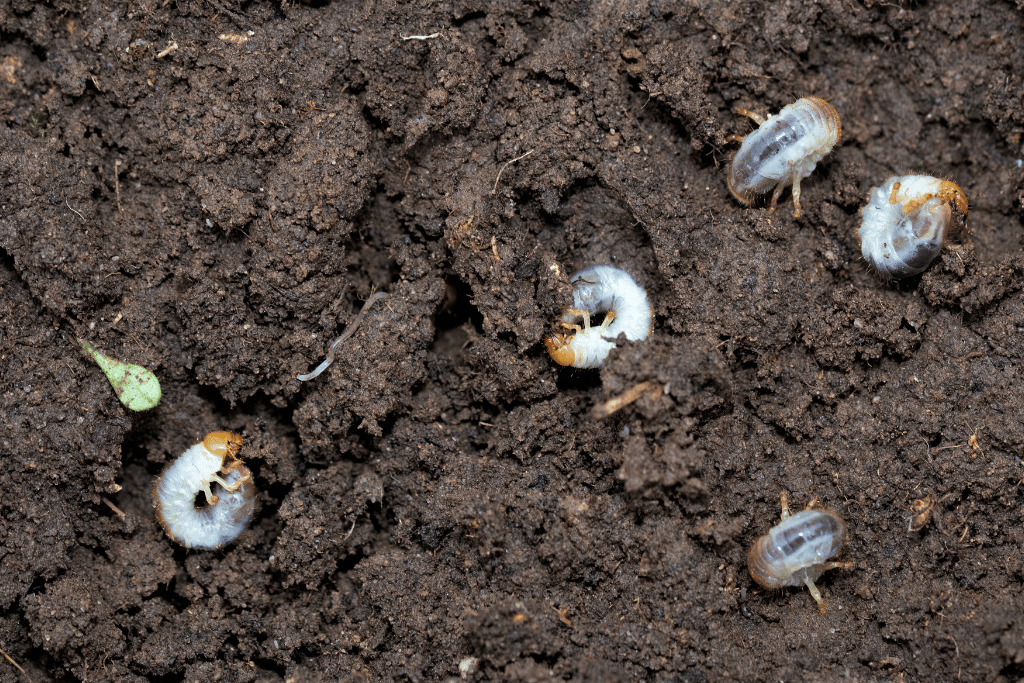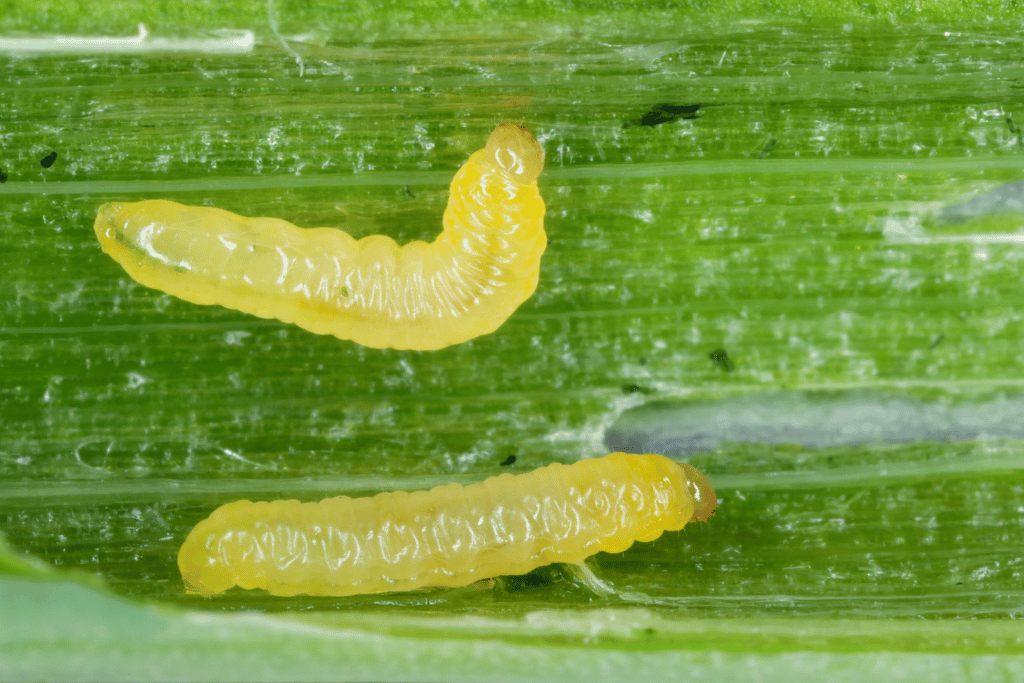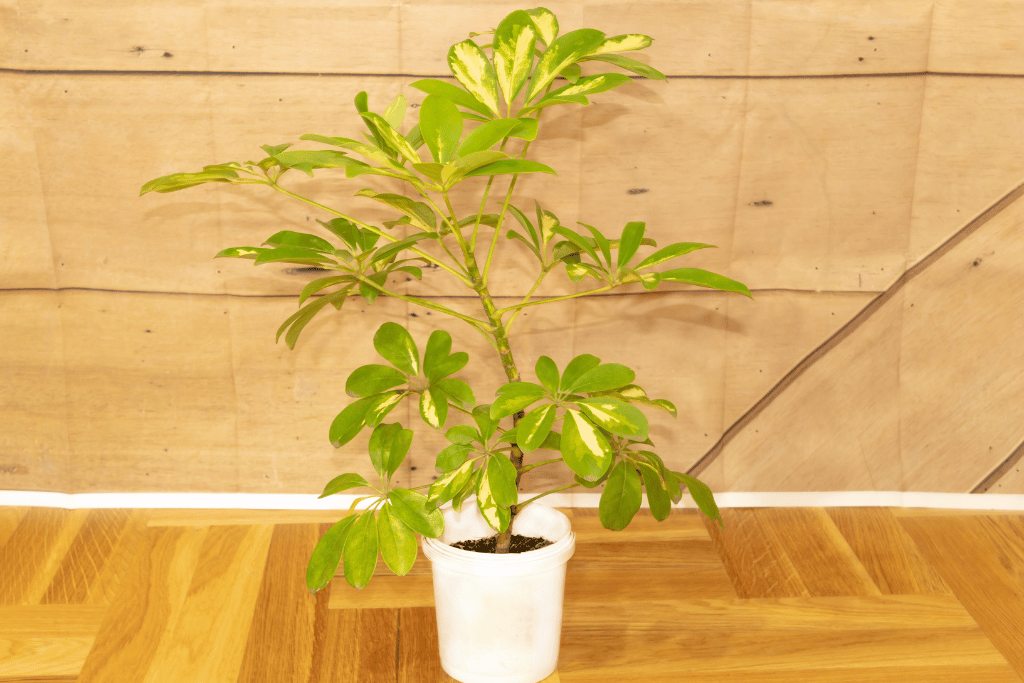
If you take the time to explore beneath the earth’s surface, an entire hidden world of mystery awaits. There are countless tiny creatures that live in this underground setting, unseen by many – yet if you look closely enough and pay attention to your surroundings, something truly incredible might just catch your eye; a translucent small clear worm that glitters like a diamond in the dirt!
At first glance, the presence of a small clear worm in your soil may look strange. However, these creatures, known as nematodes or pot worms – hold an integral place within our planet’s ecosystem. There are more than 20,000 species of nematodes that have been discovered and identified to date, making them one of the world’s most plentiful animal groups!
The reality is that the majority of nematodes are actually quite harmless, and even helpful! In fact, certain species can be used to effectively control pest infestations in farming. So while a few types may cause damage, most can usually prove useful.
If you happen to spot a translucent small clear worm in water or soil, don’t worry. It’s a sign that your soil is healthy and thriving. However, if these worms are causing damage to your plants or garden then you might have a worm infestation problem that you need to address immediately.
What are Nematodes?

Nematodes are a varied group of worms living in habitats such as soil, water and even inside other animals. These cylindrical creatures have pliable bodies encased by tough cuticles that can be seen almost everywhere on our earth, from the deep sea to your own backyard!
They vary greatly in size, from a scant millimeter to several meters long! Though some require other organisms for survival, some are independent; these free-living creatures feed on plants or animals rather than depending on them.
One of the most common ones is the translucent small clear worm with black head. By devouring bacteria, fungi, and other minute creatures in the dirt, they actively transform organic material into nutrients that plants can use to their advantage.
What are Potworms?

Potworms, also known as enchytraeid worms, are small translucent creatures that thrive in soil and compost pile. Usually ranging from 1-2 cm long with a thin body shape resembling a thread, they can be white or pinkish depending on the environment.
Like nematodes, they’re also beneficial for the soil.
Where Do These Nematodes Come From?
These small creatures can be seen nearly everywhere; they have been dispersed from their original locations both naturally through human activities like the relocation of plants and materials, as well as naturally by wind or wave action.
The Roles of Nematodes in the Soil Ecosystem

Nematodes are fundamental to the soil ecosystem, acting as a prime source of nutrient cycling and pest control. By breaking down organic matter, they liberate critical nutrients that plants need in order to thrive. Moreover, nematodes serve as essential nourishment for other organisms living within the dirt – including bacteria, fungi and insects.
Crucial to the cycling of nitrogen in the soil, certain nematode species feed on bacteria that are rich in nitrogen and convert it into a form that can be used by plants. Not only do they provide vital nutrients for plant growth, but some types also actively control populations of destructive pests like root-knot nematodes through predation of their eggs or larvae.
Several factors, including soil texture and moisture as well as nutrient availability, influence the abundance and diversity of nematodes living in the ground. Sandy soils tend to have a higher number of nematodes than clay ones due to their easier mobility; likewise, water is vital for these organisms’ survival since they drastically decrease when conditions become too arid.
Promoting a healthy soil ecosystem
To maintain a flourishing soil ecosystem, it’s essential to stimulate the growth and variety of beneficial nematodes. Sustainable farming activities like crop rotation, cover cropping, and limited tillage can help this goal tremendously. Additionally, incorporating organic matter such as compost or manure into the soil helps foster their population numbers since these organisms rely on that for sustenance.
Moreover, refraining from excessive application of synthetic fertilizers and pesticides is key to sustaining a balanced soil environment that encourages nematode numbers and overall soil wellbeing.
Identifying Beneficial Nematodes in the Soil

If you’re a gardener or farmer, then beneficial nematodes should be of utmost importance to you! Not only do they help limit the presence of harmful pests, but also promote better soil conditions and nutrient availability. To assist you in your endeavors, here are five essential species to know about:
1. Steinernema feltiae
Steinernema feltiae, a particular species of nematode, is usually employed as an effective biological control agent for soil-dwelling critters such as fungus gnats, thrips and root aphids. After introduction into the host insect body, these microscopic creatures release bacteria that sign off on the insects’ death within a few days. Available in markets or online, and easy to apply directly onto soils; this efficient organism may be your perfect solution when it comes to pest extermination.
2. Heterorhabditis bacteriophora
Biological pest control using the Heterorhabditis bacteriophora nematode species is a powerful and efficient method to combat soil-dwelling insects like grubs, caterpillars, and weevils. This particular species of nematode has the unique ability to infect its host insect while simultaneously releasing bacteria that will ultimately kill it. Fortunately for us, this amazing organism can be purchased commercially in order to apply it effectively at home or on your property.
3. Pratylenchus penetrans
Also known as a “plant-parasitic” nematode, they can actually be helpful to plants in various ways. Not only do they feed on other pests like root aphids and fungus gnats that damage plant roots, but their activity helps to release important nutrients from organic matter into the soil; this improves soil structure and nutrient availability for your plants! While high populations of these nematodes can harm a plant’s health, low to moderate levels are beneficial.
4. Panagrolaimus superbus
These may not be well-known for biological pest control, yet, their benefits to plants are remarkable! This unique species feeds on fungi in the soil and has been found useful in reducing fungal diseases in plants. Furthermore, it also helps boost soil structure by adding nutrients from underground as they move around actively within the soil.
5. Caenorhabditis elegans
They can significantly contribute to plant health. By consuming the soil-dwelling bacteria and releasing a chemical signal, they activate the plants’ immunity system which in turn helps protect them from pests and diseases. Furthermore, C. elegans are capable of improving soil structure and making essential nutrients more accessible to plants – something this nematode species was never previously known for.
Harmful Nematodes in the Soil

To ensure your garden and crops don’t become damaged by nematode infestations, here are five species you should be aware of:
1. Meloidogyne spp.
Root-knot nematodes are some of the most destructive plant parasites, and they can wreak havoc on a variety of crop species by infecting their roots. When under attack from root-knot nematodes, plants suffer symptoms such as stunted growth, yellowed leaves and dwindled yields – all due to the galls formed around infected roots which impede water and nutrient absorption.
2. Pratylenchus spp.
They can become a significant nuisance for crops such as soybeans, cotton and potatoes when other species of the genus feed on plant roots. This results in stunting, wilting and reduced yields – causing serious damage to harvests worldwide.
3. Radopholus similis
This type of nematode is a notable threat to tropical crops, such as bananas. It attacks the roots of plants where it causes stunting, wilting and decreased yield. Furthermore, you may notice yellowed leaves and premature ripening of fruit on infected plants..
4. Tylenchulus semipenetrans
A menace to citrus crops, gnawing on roots that results in stunted growth. Trees may further display yellowing leaves and a decline in fruit quality due to the pest’s voracious appetite.
5. Ditylenchus dipsaci
This parasitic nematode species can wreak havoc on many plants, including beans, peas and garlic. It feeds off the bulbs or stems of these plants causing distortion and discoloration. Infected crops may also exhibit weakened growth leading to reduced yields.
What to do With Harmful Worms That are Damaging Your Plants?
If the worms in your garden are wreaking havoc on your plants, there are a few solutions you can take to control this issue.
Identify the type of worm:
It is important to identify the type of worm plaguing your garden before initiating any attempt at remedy; this will help you determine the most effective control measures.
Remove infected plants:
To protect your other plants from being overtaken by malicious worms, it is necessary to remove severely infected or infested specimens from the garden.
Cultural control:
Cultural control methods are a great way to keep harmful worms in check. Opting for crop rotation, covering the crops, and abstaining from over-fertilization can all help dissuade these pesky creatures from invading your garden or farm – making it easier for you to reap the rewards of your hard work!
Biological control:
Beneficial nematodes offer a natural, effective solution for controlling and eliminating harmful worms. They can be purchased from vendors and applied directly to the soil, whereupon they will burrow into their prey’s body and cause infection that eventually results in death.
Chemical control:
If all other strategies fail, you may need to resort to chemical control methods. Nonetheless, it is essential to utilize pesticides responsibly and abide by the label instructions so that we can protect helpful organisms and maintain a clean environment.
It’s important to note that prevention is key when it comes to managing harmful worms in your garden.
Translucent Small Clear Worms in the Soil: The Benefits

There are many benefits of having clear worms in the soil, such as:
1. Nutrient cycling
Clear worms are nature’s super-workers, performing the essential task of cycling nutrients in the soil. Their job is to consume dead organic matter, breaking it down into small particles that can be more easily digested by microbes and eventually released back into the soil for plants to use. Thanks to these hard working creatures, our gardens receive ample nutrition.
2. Soil aeration:
Not only are translucent worms beneficial for improving the soil’s structure, but they also help to increase aeration by forming pathways as they burrow through it. This opens up more space for air to get past the surface level and deeper into the ground, allowing oxygen to be delivered both to plant roots and microorganisms beneath them. With this improved ventilation from these critters comes healthier plants that have strong foundations in well-aerated soil.
3. Water retention:
Through their active burrowing and movements, these worms create special pockets in the soil which trap water. This improves moisture levels for plants while also reducing runoff, enabling better absorption of water into the ground.
4. Biological diversity:
The presence of clear worms is crucial for a thriving soil ecosystem – they provide sustenance to other life forms such as beetles, arachnids and centipedes, while also sustaining populations of helpful microorganisms. In this way, these creatures are invaluable contributors to the biodiversity of our soils!
Final Words
If you stumble upon a translucent small clear worm in the soil, don’t worry – they’re most likely harmless nematodes or pot worms that play a vital role in keeping your garden healthy. However, if they are in abundance and indicate plant damage, it may be wise to take precautionary steps to protect your plants from harm.



